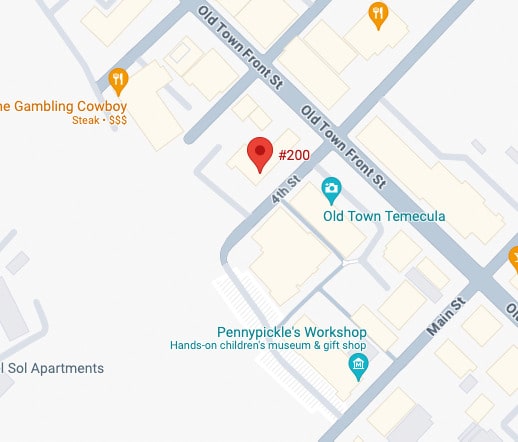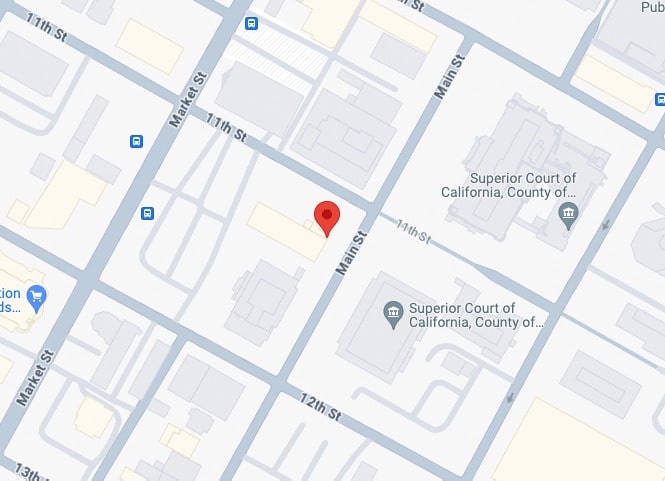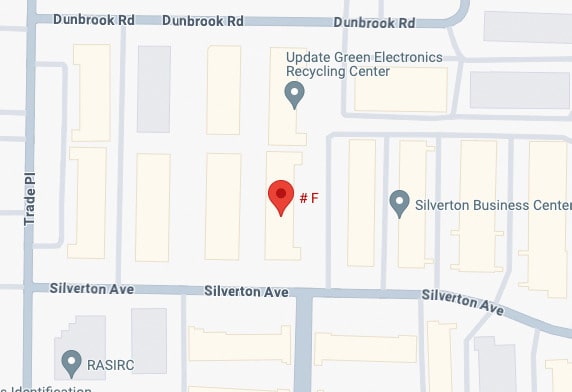If you are arrested for a crime and want to secure your release, you should know that various variables influence bail amount. Judges determine your bail based on several variables because the amount differs for every case. These variables include your offense's seriousness, financial status, and criminal history.
The judge has the jurisdiction to determine bail using a bail schedule, increase or decrease the standard bail, refuse to set bail, waive bail, release you on your own recognizance (OR), and impose other bail conditions. Although each case is unique, the court will typically take into account the following factors when determining bail:
Your Source of Finances
Several studies have examined the impact of income and its source on bail decisions. One study established that when public defenders represented defendants, they were more likely to be released on their own recognizance than when they had private attorneys. Another study examined whether judges considered defendants' ability to pay when setting bail. The study found that judges were likely to set lower bail amounts for defendants they believed could pay and higher bail amounts for those they deemed could not.
However, a bail schedule that lists set amounts for each crime does not consider a defendant’s financial resources. This can result in defendants who cannot pay bail being jailed before trial while those who can pay are released. These studies suggest that a defendant’s source of finances can influence the amount of bail set in their case. If you cannot pay the total amount of your bail, you may consider working with a bail bonds company to help secure your release.
Your Current Criminal Status
Judges could consider your current criminal status when determining the amount of bail you should pay before you can be released from jail and await trial. Usually, the judge reviews your criminal history to know your current criminal status, including any prior arrests, convictions, or failures to appear in court.
If you have a history of failing to appear in court or have a prior criminal record, the judge could consider you a higher risk for refusing to return for your court appearances. In such cases, the judge could set a higher bail amount to ensure you will return for your court appearances. On the other hand, if you have no prior criminal history and the judge does not consider you a flight risk, they could set a lower bail amount.
The severity of the Your Offense
The severity of your crime is a factor that a California court could use when determining the bail amount you should pay because it can indicate your risk to the community if released. Typically, crimes that are more severe or pose a more significant threat to public safety carry a higher risk of you committing new offenses or engaging in violent behavior if released. As a result, the court could set higher bail amounts for you with more severe crimes to ensure you remain in custody until your trial.
Additionally, your offense's severity could be a factor because it could affect your likelihood of fleeing or failing to appear in court if released on bail. If you are charged with a serious or violent crime, you could have a greater chance to flee to avoid prosecution or punishment. This could be seen as increasing the risk of the defendant failing to appear in court if released, and it is considered when determining the bail amount.
Police Practices That Affect Bail Amounts
Unfortunately, police frequently arrest people for the most serious criminal charge that the information at hand can substantiate. This is unfortunate for many suspects who want to leave jail fast. For example, the police would arrest you for possessing marijuana with the intent to sell it, even if it is only for a small amount. Your charge could be treated as a felony for the bail schedule even though it will almost definitely be downgraded to a misdemeanor later on in the case, and bail will be set accordingly.
Public Safety
Public safety is another factor considered when determining bail because the purpose of bail is to ensure that you do not pose a threat to public safety if released from jail. When determining bail, the judge will consider your likelihood of posing a risk to public safety if released from jail.
If you are considered a high risk to public safety, the judge could set a higher bail amount to ensure that you remain in custody while awaiting trial. On the other hand, if the defendant is not considered a risk to public safety, the judge could set a lower bail amount.
For example, if you are charged with a violent crime or have a history of violent offenses, the judge could view you as a higher risk to public safety and set a higher bail amount. On the other hand, if you are charged with a non-violent offense and have no prior criminal history, the judge could consider you a lower risk to public safety and set a lower bail amount.
Flight Risk
Flight risk refers to the likelihood that you will flee or fail to appear for your court appearances if released from jail. When determining your bail amount, the judge will consider your flight risk to ensure that you will return for your court appearances and not interfere with the administration of justice.
If the court determines that you are a high flight risk or likely to flee, it could set a higher bail amount to ensure that you appear in court during proceedings. However, the judge could set a lower bail amount if you are not considered a flight risk.
The court considers several factors when determining your flight risk, including your current criminal status, ties to the community, employment status, and financial resources. For example, if you have strong ties to the community, such as a job and a family, you are less of a flight risk because you have more to lose if you fail to appear in court. Similarly, if you have a stable job and sufficient financial resources, you are less of a flight risk because you can support yourself while awaiting trial.
Evidence the Prosecution Presents
Evidence of your charges is a factor that could be considered when determining your bail amount because it helps the court understand the nature and circumstances of the offense that you are charged with. This information is crucial because it allows the court to determine the potential risks and consequences of your release from jail and helps the court decide whether or not you are likely to return for your court appearances.
When determining your bail amount, the court will consider the evidence of your charges as a way to gauge the seriousness of the offense that you are charged with. The evidence of your charges may include the specific allegations against you, the details of the crime, and any witness statements or other evidence that support the allegations. The court may also consider any relevant evidence that suggests that you are a flight risk or pose a risk to public safety if released from jail.
Bail Schedules
You could post bail with the law enforcers in California before you are arraigned or appear in court for a bail hearing. Particular bail schedules in many jails outline the bond amounts for specific offenses. The bail schedule considers the crime's seriousness, the defendant's criminal history, and a flight risk. For example, between five and ten times as many bail amounts are needed for felonies as for misdemeanors.
In California, the bail schedule is set by the Judicial Council and can be found online. By posting the amount of bail specified in the jailhouse bail schedule, an accused defendant can be released immediately after being booked. Bail schedules can differ significantly according to the area, crime kind, and residency.
Some places have on-call judges as an alternative to or in addition to the jailhouse bail schedule. A judge could set bail over the phone without needing a formal court session. Using a duty judge is an alternative for people who have been arrested and want to leave jail before appearing in court, much like a jailhouse bail schedule.
Your Ties With The Community
When determining the bail amount for a person, the judge could consider a defendant’s ties to the community to gauge their likelihood of returning for their court appearances and not posing a threat to public safety if released from jail. Links to the community refer to your connections with your local area, for example, your residence, employment, and relationships with friends and family.
If you have strong ties to the community, for example, a stable job and family, the judge may view them as less of a flight risk and may set a lower bail amount. But, if you have weaker ties to the community, such as no stable residence or employment, the judge could set a higher bail amount.
Bail-Setting Algorithms
Bail-setting algorithms are computer programs that help judges determine the appropriate amount of bail for suspects in criminal cases. These algorithms are based on statistical models and data sets designed to predict the likelihood that a suspect will return for their court appearances and not pose a threat to public safety if released from jail.
When determining bail, the court inputs your information into the algorithm, including your criminal history, the nature of your current offense, and other relevant factors. The algorithm uses this information to generate a recommended bail amount based on the statistical data and models it has been trained on.
The recommended bail amount generated by the algorithm is not the final bail amount but a starting point for the judge or legal official to consider. When determining the final bail amount, the judge or legal official may consider other factors, such as the defendant's ties to the community, employment status, and financial resources.
Potential Penalty of Charged Offense
As a defendant in a criminal case, the potential penalty for your offense could be used to determine your bail. The potential penalty refers to the maximum sentence you could receive if you are convicted of the crime you are charged with. The potential penalty for an offense depends on the specific California laws and the severity of the offense.
For example, a crime with a potential penalty of imprisonment for more than a year is generally considered a more serious offense than a crime with a potential penalty of less than a year in jail.
When determining your bail amount, the judge gauges the severity of the crime you are charged with. If accused of a crime that carries a potential penalty of imprisonment for a significant amount of time, the judge could view you as a higher risk for failing to return for your court appearances and set a higher bail amount.
Previous Defaults/ History Failure To Appear At Court Dates
Previous defaults or a history of failing to appear at court dates could indicate a lack of respect for the legal system and a willingness to defy the terms of one's release. If you have a history of failing to appear in court, it may suggest that you are not likely to follow through on your obligations if released on bail and could increase the risk of failing to appear at future court sessions or fleeing the jurisdiction.
Additionally, you are a risk to public safety with a history of failing to appear in court. If released on bail, you could evade authorities or avoid being held accountable for your criminal acts. A judge could consider this when determining the bail amount, as it may be seen as a factor that increases the risk of you committing new crimes or engaging in violent behavior if released.
History of Mental Illness and Substance Abuse
Mental illness and substance abuse have long been linked to the public mind. This is not surprising, given that both conditions can lead to erratic and dangerous behavior. The legal system also reflects the link between mental illness and substance abuse. In California, bail amounts are often higher for defendants with a history of mental illness or drug abuse.
The reasons for this are:
- Defendants with a history of mental illness or substance abuse are more likely to flee or be a flight risk. This means they are more likely to skip court dates if released on bail.
- Defendants with a history of mental illness or substance abuse are considered a danger to the community. This is because they are more likely to commit criminal acts if released on bail.
- Courts often take into account the resources that are available to defendants when setting bail amounts. Defendants with access to resources like friends or family members who can help them make bail are often seen as less of a risk than those without such resources.
Whether currently on probation or parole or pending appeal of a criminal conviction
Whether you are currently on probation or parole or pending the appeal of a criminal conviction could indicate your level of risk to the community if released. So if you are currently on probation or parole, it suggests that you have already been convicted of a crime and have been released into the community under certain conditions.
If you are released on bail while on probation or parole, it may increase the risk that you will violate the terms of your release or commit additional crimes. A judge could consider this when determining the bail amount, as it may be seen as a factor that increases the risk of the defendant engaging in dangerous or violent behavior if released.
Similarly, if you have a pending appeal of a criminal conviction, it means that you have been found guilty of a crime but are challenging the conviction in court. Therefore, if released on bail while your appeal is pending, it could increase the risk that you could flee or fail to appear in court for your appeal proceedings. The court could also consider this when determining the bail amount, as it could be a factor that increases your risk of failing to adhere to the set bail conditions.
Find a Reliable Bail Bonds Company Near Me
Many factors determine the bail amount in California. The article above has discussed some of these, including your crime's severity, criminal history, and whether you are a flight risk. In many cases, bail is set high to ensure you appear for court proceedings. If the bail is higher than you can afford, you want to contact a bail bonds company to help secure your freedom.
At Justice Bail Bonds, we offer reliable and fast bail bond services to suspects who want to walk out of jail fast. We run around the clock and offer our clients flexible payment options. Call us today at 951-445-4155 if you are detained but cannot post the determined cash bail in Temecula, CA.










